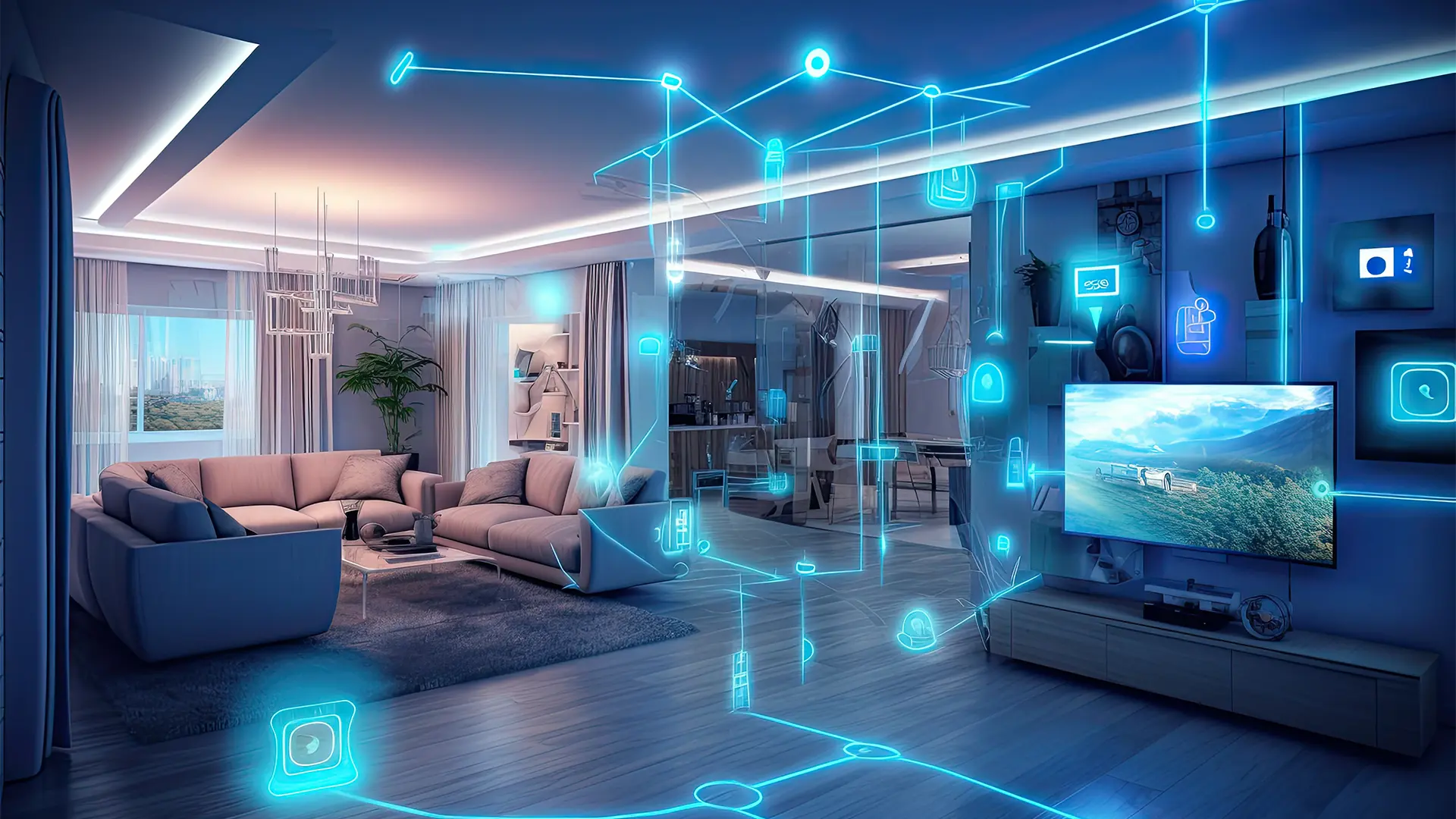Table of contents
- What is a smart home?
- Main security threats in a smart home
- How to protect your smart home
- Interconnected security
With the rise of connected devices in homes, new security challenges and threats have emerged that must be addressed.
What is a smart home?
A smart home can be defined as a house equipped with smart devices that communicate with each other and can be controlled remotely. These devices include thermostats, lights, security cameras, voice assistants, and more. Studies by the Politecnico di Milano have shown that smart homes can reduce energy consumption and increase living comfort.
Main security threats in a smart home
IoT Device Vulnerabilities
IoT (Internet of Things) devices, such as security cameras, motion sensors, and smart speakers, are often targets for hackers. If not properly protected, these devices can be used to access the home network and personal data of users.
Examples:
- Security cameras
If not configured correctly, they can be easily accessed by malicious individuals.- Motion sensors
They can be manipulated to disable security systems.
Inadequate Wi-Fi network protection
The security of the home Wi-Fi network is crucial to protecting a smart home. Unprotected networks can be easily breached, allowing hackers to access connected devices.
Examples:
- Weak passwords
Use strong and unique passwords for the Wi-Fi network.- Encryption
Ensure the network uses WPA3 encryption.
Privacy and data protection
Smart devices collect a significant amount of personal data. It is essential to ensure that this data is protected against unauthorized access and abuse.
Examples:
- Voice assistants
Can collect sensitive information if not configured correctly.- Connected devices
Should have transparent and secure privacy policies.
Software updates
Many attacks exploit vulnerabilities in outdated software. It is important to keep all smart devices updated to protect them against the latest threats.
Examples:
- Outdated firmware
May contain known security flaws.- Security patches
Should be applied as soon as they are available.
Unauthorized physical access
In addition to digital attacks, it is crucial to protect smart devices from unauthorized physical access, which could compromise the entire system’s security.
Examples:
- External cameras
Should be securely mounted to prevent tampering.- Internal devices
Such as smart speakers, should be placed in secure locations.
How to protect your smart home

Use reliable security systems
Invest in reliable and high-quality smart home security systems that offer advanced protection against intrusions.
Examples:
- Alarm systems
Integrated with motion sensors and cameras.- Remote control
Through secure apps to monitor your home.
Configure secure Wi-Fi networks
Ensure the Wi-Fi network is protected with a strong password and uses the latest encryption technologies.
Examples:
- WPA3
The most secure encryption technology for Wi-Fi networks.- Unique passwords
Avoid common or easily guessable passwords.
Manage device permissions
Limit the permissions of smart devices and configure privacy settings to minimize data collection and use.
Examples:
- Privacy settings
Change the default settings of voice assistants.- Limited access
Control which devices can access data.
Keep softwares updated
Ensure all devices are always updated with the latest security patches and firmware available.
Examples:
- Automatic updates
Enable automatic updates when possible.- Regular checks
Periodically check for new updates.
Education and awareness
Educate yourself and your family members on best security practices to avoid risky behavior.
Examples:
- Good practices
Do not share passwords and be cautious with phishing emails.- Awareness
Stay informed about new security threats.
Interconnected security
Securing a smart home requires a combination of advanced technology and good management practices. Protecting your smart devices and home network is essential to fully enjoy the benefits of smart homes without compromising security. Investing time and resources to improve the security of your smart home can prevent incidents and ensure a safe and protected home environment.
FAQ
- What is a smart home?
A smart home is a house equipped with smart devices that communicate with each other and can be controlled remotely through apps or voice assistants. - What are the main security threats in a smart home?
The main threats include IoT device vulnerabilities, inadequate Wi-Fi network protection, privacy and data protection issues, lack of software updates, and unauthorized physical access. - How can I protect my smart home’s Wi-Fi network?
Use a strong password, enable WPA3 encryption, and avoid sharing the password with strangers. - Why is it important to keep smart devices updated?
Software updates often include security patches that fix known vulnerabilities and protect against the latest threats. - What are some examples of smart home devices?
Examples include smart thermostats, security cameras, voice assistants, smart lights, and motion sensors. - How can I manage the privacy of my smart devices?
Limit device permissions, configure privacy settings, and stay informed about the manufacturers’ data collection policies. - What are the benefits of a smart home?
Benefits include increased comfort, energy efficiency, remote control, enhanced home security, and automation of daily tasks.
